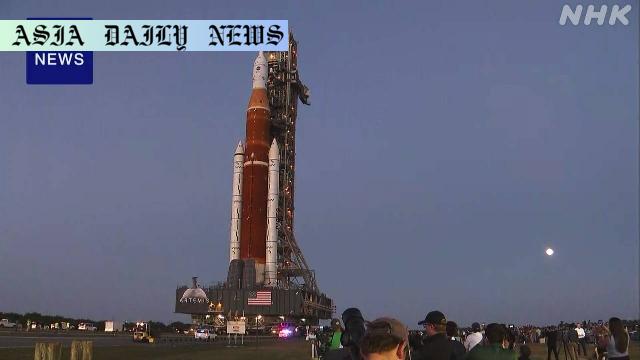NASA plans to phase out the Artemis Program’s rocket and spacecraft, redirecting resources towards commercial systems amidst a 24% budget cut.
- NASA announces significant changes to the Artemis Program due to a $6 billion budget cut.
- The Space Launch System rocket and Orion capsule will retire post-2027.
- Commercial systems will take over in response to budget constraints.
- Lunar exploration gets $7 billion, and $1 billion is allocated to Mars-focused programs.

NASA’s Budget Cut and the Shift Towards Commercial Systems
The United States’ space agency, NASA, has unveiled significant changes to its Artemis Program aimed at lunar exploration. These adjustments come as a direct consequence of a massive $6 billion budget reduction for fiscal year 2026, which represents 24% of its existing funding. This budget plan, released by the administration of President Donald Trump, has necessitated a strategic reallocation of NASA’s financial resources.
One of the principal announcements includes the retirement of the Artemis Program’s Space Launch System rocket and the Orion capsule following a launch scheduled for 2027. These components, previously central to the U.S.-led lunar mission, will be replaced by cost-effective commercial systems designed to optimize mission expenditures while maintaining the program’s scientific ambitions. This shift underscores NASA’s commitment to fiscal responsibility while fostering innovation in the private aerospace sector.
Impact on Key Programs and Focus on Mars Exploration
NASA’s recalibration also includes the planned termination of the Gateway Program, a project originally intended to establish a permanent lunar space station. Furthermore, the agency will reduce astronaut crew sizes and onboard research at the International Space Station (ISS) as it looks ahead to its eventual decommissioning by 2030. These measures will redirect resources towards more immediate lunar exploration activities and future Mars-focused missions.
To reinforce its objectives, NASA proposes allocating over $7 billion for lunar exploration. Additionally, $1 billion will be directed toward innovative Mars-focused initiatives, signaling a broader strategy to outpace international competitors. The agency strongly positions itself to “beat China back to the Moon” while continuing cutting-edge exploration initiatives beyond Earth’s orbit.
Commercial Systems: A New Era of Space Exploration
The move towards commercial systems is emblematic of the evolving space landscape. NASA’s collaboration with private aerospace entities represents a paradigm shift in space exploration. These partnerships are instrumental in developing efficient, reusable, and affordable technologies that promise to redefine how humans approach space exploration. The transition aligns with broader trends in the aerospace industry, where commercialization has accelerated innovation.
For NASA, leveraging private-sector expertise is both a cost-saving measure and an opportunity to expand its exploratory reach. By outsourcing critical elements of space missions to commercial ventures, the organization can focus its core scientific and exploratory objectives while reducing administrative overhead.
A Competitive Global Landscape
NASA’s strategic focus also reflects a keen awareness of increasing global competition in space exploration. China’s ambitious lunar programs have spurred the U.S. to accelerate its mission timelines and technological advancements. This new budget proposal underscores the urgency of reestablishing U.S. dominance in extraterrestrial exploration, both for scientific purposes and as a symbol of geopolitical influence.
In particular, NASA’s compelling goal of being the first to place a human on Mars represents the culmination of decades of innovation, research, and enduring ambition. This aspiration holds geopolitical significance as the U.S. seeks to reaffirm its leadership in space exploration amid rising international competition.
In sum, NASA’s decision to adapt its programs and refocus its efforts reflects its resilience and visionary approach to space exploration. By embracing fiscal constraints, promoting partnerships with private industry, and committing to its long-term goals, the agency continues to inspire and shape humanity’s future among the stars.



Commentary
The Challenges of Balancing Ambition with Fiscal Constraints
NASA’s announcement of a $6 billion budget cut highlights one of the most profound challenges faced by large public institutions: balancing ambition with fiscal realities. The agency has long been a symbol of human ingenuity and a gateway to the vast unknowns of space. Yet, this bold enterprise often grapples with financial limitations that hinder its capability to fully realize its lofty goals. This move to redirect resources from legacy programs like the Artemis Program toward commercial systems and Mars exploration is a pragmatic response to a tightening fiscal environment.
Opportunities in Embracing Commercial Innovation
One silver lining in this development is NASA’s willingness to embrace the private sector as a vital partner in its journey. The rise of commercial players like SpaceX and Blue Origin has proven that private entities have the capability and ingenuity to support and potentially expand humanity’s reach into space. By collaborating with commercial aerospace firms, NASA can save on costs while ensuring that the pace of innovation does not stagnate. Moreover, this approach could democratize space exploration, opening the door to new stakeholders and reducing the exclusive burden on governments to pioneer extraterrestrial missions.
Focus on Mars and the Broader Implications
Perhaps the most exciting part of this announcement is the renewed emphasis on Mars exploration. Human exploration of the Red Planet is an ambitious objective that inspires not only scientists and engineers but also the broader public. This goal could galvanize nations, spur technological breakthroughs, and reignite public enthusiasm for space exploration. While competition with other spacefaring nations like China adds an element of urgency, it also pushes NASA to remain innovative and committed to its objectives. This competitive drive might ultimately benefit humanity as milestones are achieved more quickly and with greater efficiency than ever before.
Ultimately, NASA’s recalibration reminds us of the resilience and adaptability of scientific institutions. While the budget cuts present immediate challenges, they also pave the way for a leaner, more agile future for the institution. NASA’s story remains a compelling narrative of exploration, adaptation, and the unyielding human desire to understand the universe.